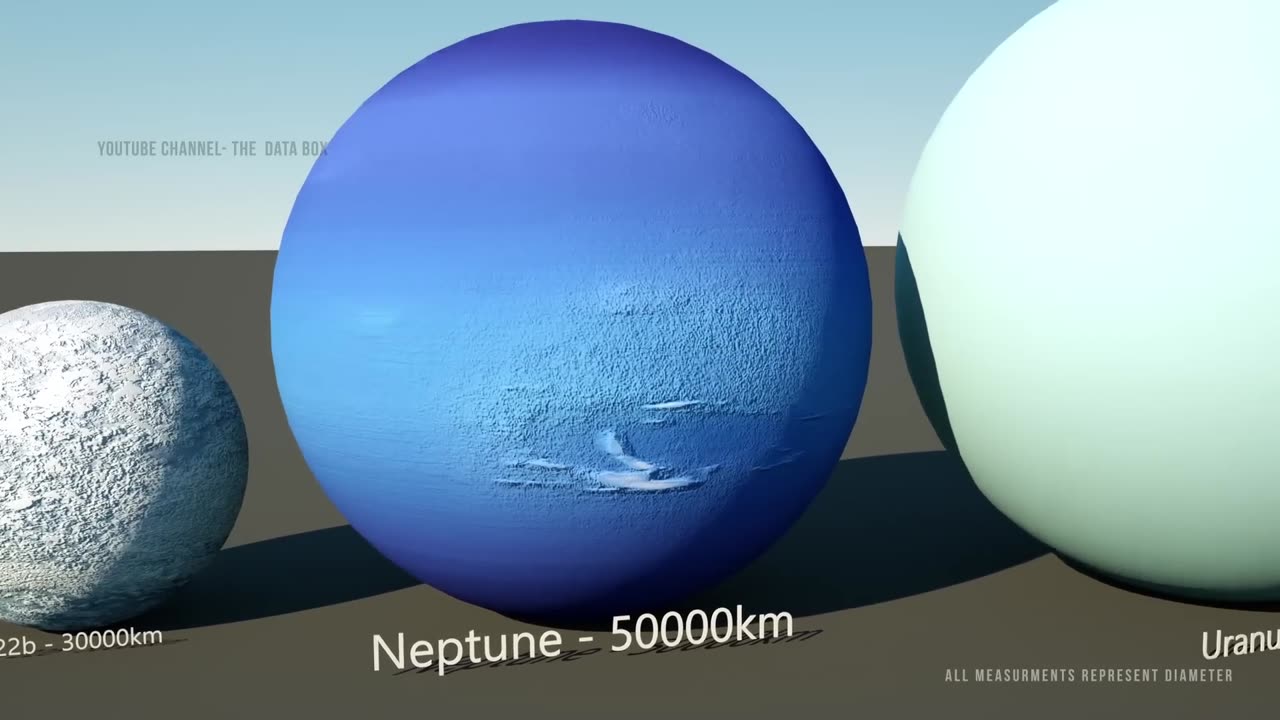Premium Only Content

Universe Size 3D comparison | Solar System |
Certainly! Imagine you're on a cosmic journey, and you want to compare the sizes of various celestial objects in our universe in 3D. Let's start small and work our way up:
1. **Earth**: We begin our journey on our home planet. Earth is about 12,742 kilometers (7,918 miles) in diameter, a familiar place where life thrives.
2. **Moon**: Our moon is Earth's faithful companion, measuring about 3,474 kilometers (2,159 miles) in diameter. It orbits relatively close to us.
3. **Mars**: The Red Planet, Mars, is roughly half the size of Earth, with a diameter of 6,779 kilometers (4,212 miles). It's a potential future destination for human exploration.
4. **Jupiter**: Moving beyond our neighboring planets, we encounter the gas giant Jupiter. It dwarfs all others with a colossal diameter of 139,822 kilometers (86,881 miles). You could fit over 1,300 Earths inside it!
5. **Sun**: As we journey further out, we approach our star, the Sun. It's enormous, with a diameter of approximately 1.4 million kilometers (870,000 miles). The Sun's immense gravity holds our solar system together.
6. **Solar System**: The solar system is a vast expanse. If we consider the distance from the Sun to Pluto (formerly the ninth planet), it's about 7.5 billion kilometers (4.7 billion miles) at its farthest. Picture this immense space filled with planets, asteroids, and comets.
7. **Milky Way Galaxy**: Zooming out even further, we encounter our galaxy, the Milky Way. It spans about 100,000 light-years, containing billions of stars, including our Sun. It's like a cosmic city of stars.
8. **Local Group**: Our Milky Way is just one of many galaxies in our local group. This group includes about 54 other galaxies, like Andromeda, Triangulum, and more, all gravitationally bound together.
9. **Virgo Supercluster**: Our local group is part of an even larger structure called the Virgo Supercluster. It contains hundreds of galaxy groups and spans over 110 million light-years across.
10. **Observable Universe**: Finally, we contemplate the entire observable universe. It's a staggering expanse, estimated to be about 93 billion light-years in diameter. Beyond this limit, we cannot see, but it's a reminder of the vastness of our cosmos.
This 3D comparison helps us appreciate the immense scales of objects in our universe, from the smallest planets to the grandest superclusters, highlighting the wonder of the cosmos.
-
 LIVE
LIVE
Grant Cardone
4 hours agoHow to Buy Real Estate With NO Money Down (LIVE Training With Grant Cardone)
1,324 watching -
 LIVE
LIVE
AlaskanBallistics
11 hours agoShooting the WhisperStrike WT30 Live!
95 watching -
 19:53
19:53
MetatronHistory
18 hours agoRome VS Greece - Ultimate Clash of Civilizations Explained
38.7K9 -
 LIVE
LIVE
The Big Mig™
4 hours agoThe Big Mig Show's Greatest Hits w/ Americas Future, Karmageddon, Operation Gideon,..
99 watching -
 1:32:33
1:32:33
VapinGamers
3 hours ago $4.46 earnedTools of the Trade - EP12 The Art of Story Telling with MidnightinTheMountains - !rumbot !music
23.6K2 -
 LIVE
LIVE
SOLTEKGG
3 hours ago🔴LIVE - Battlefield 6 - Going Pro in RED SEC
183 watching -
 LIVE
LIVE
Midnight In The Mountains™
4 hours agoThe Midnights Play Arc Raiders | Loot Scoot and KILL | Crypto Wallet up n running GO JOIN THE BETA!
102 watching -
 53:25
53:25
X22 Report
6 hours agoMr & Mrs X - Trump Is Using The Same Tactic As Our Founding Fathers To Rebuild America - EP 17
89K24 -
 LIVE
LIVE
PudgeTV
2 hours ago🟣 Arc Raiders - Gaming on Rumble | Going Topside w My Daughter’s Husband
70 watching -
 2:05:43
2:05:43
LFA TV
22 hours agoRUMBLE RUNDOWN WEEK 7 with SHAWN FARASH 11.22.25 9AM
148K9